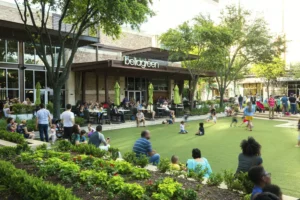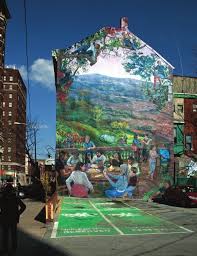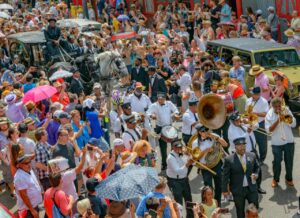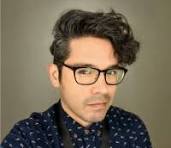
CityCentre Houston – OJB Landscape Architecture. 2014. Shannon O’Hara
Placemaking, as an intentional practice, came into being in the late 1960’s, as architects, scientists, artists, geographers, planners, and designers all struggled with the impersonality and alienation of Modernism (1). The rationality of the prevalent design practice at that time, the oppressiveness of brutalism, the gospel of the Modern skyscraper made these various professionals react with a call for a different type of solution, one that involved a multi-disciplinary approach: placemaking. These professionals called for an emphasis on the human experience, rather than the formal spatiality of the built environment, which allowed them to focus on the importance of human-scale development, on the economic relevance of mixed-use neighborhoods, and the critical role of walkable streets. These discrete components would collectively contribute not just to the vibrancy of public spaces, to the creation of the idea of a sense of place.

2008-024: Taste of Summer © 2008 City of Philadelphia Mural Arts Program/ Ann Northrup and Reentry Workers
It was not until 2010, when Ann Markusen and Anne Gadwa wrote their landmark white paper Creative Placemaking (2), that art entered the placemaking conversation in a significant way. As the name implies, this is an approach that uses art as the lens by which placemaking comes into being. We are all aware of how street art can transform a building into a memorial, how a large statue in a corporate plaza can create a visual marker, and so on- but the role of art in placemaking is much more profound than that. ArtPlace America, the 10 year philanthropic project dedicated to establishing, funding, and growing the field of creative placemaking in the United States, acknowledged that community development can happen across a wide range of sectors, including housing, agriculture & food, public safety, transportation, workforce development, etc. For them, art has the capacity to work in a intersectional capacity- meaning that it can cut across a variety of strata and make connections that would otherwise not exist. For example, a storytelling festival can bring together a diverse age range that might not otherwise interact in a location where they may not typically enter, which would allow for new forms of community building to happen.

Carlos Cruz-Diez. Crosswalks of Additive Color [Intersection of Main St. and Bissonnet St.] Designed c.1960, executed 2011.
This is the positive side of placemaking. But there is also the possibility of placekeeping or placefinding. What’s in the nuance of these variations? The idea here is that placemaking may inadvertently conceal an element of authenticity in the place where the action is happening. For example, the work of landscape preservation can be considered a form of placekeeping: allowing the genius loci to remain, to give character to the area in question. The work of the landscape architect here is that of a curator who helps to maintain what makes that place special. Placefinding, in turn, is a kind of archaeological maneuver that seeks to uncover, to restore some of the meaning that may have been concealed at some point in the past. For example, the work of highway removal from urban centers is an attempt to restore those
neighborhoods whose vitality was cut down by the highway itself. This is the community healing itself, but it is through the creativity of the urban planners, architects, community leaders, that this can happen.

Jazz Funeral in New Orleans, La. Saturday, June 22, 2019. Photo by Matthew Hinton
This leads to the final point regarding the expanded field of placemaking: that this is work that is inherently collaborative. It is not the single artist whose hand is visible, but the collective effort of a wide array of people, working together that achieves the intended result of building community. There can be no doubt that art is one of those human endeavors that brings us together: we share stories around the campfire; we photograph, paint, document our daily lives; we dance together in celebration, in memorial, in love, in grief (think of the famous funerals of New Orleans). Art happens to all of us. Art happens through each of us. We rejoice and see the world anew through it. Putting art in placemaking does so much more than simply create art; it creates new worlds for us to discover.

This piece was written by Ernesto Alfaro, LJA Engineering.
We hope you can join us for WHA’s Forum The Art of Placemaking: Arts & Culture in Community Development on September 18, 2025 that Ernesto will be moderating.
Note 1: In the context of this essay, Architectural Modernism is distinguished from other forms of modernist creative practice and is widely considered to have existed between 1932 (when the Museum of Modern Art opened its exhibit on the International Style) until 1975 (often considered when postmodernism began).
Note 2: Per the white paper itself: “A White Paper for The Mayors’ Institute on City Design, a leadership initiative of the National Endowment for the Arts in partnership with the United States Conference of Mayors and American Architectural Foundation”
